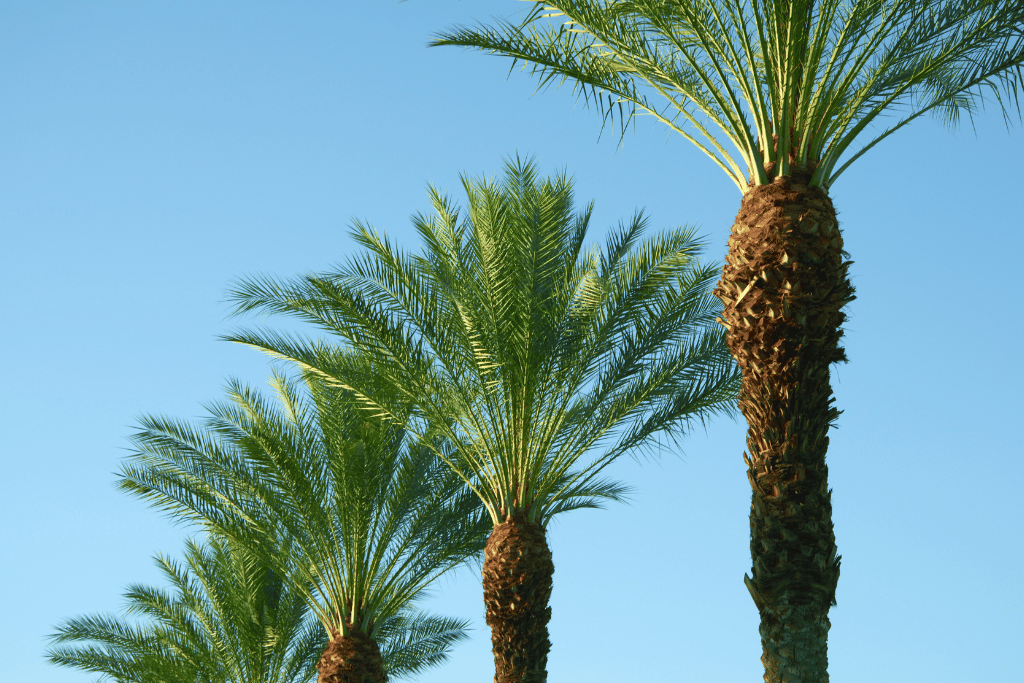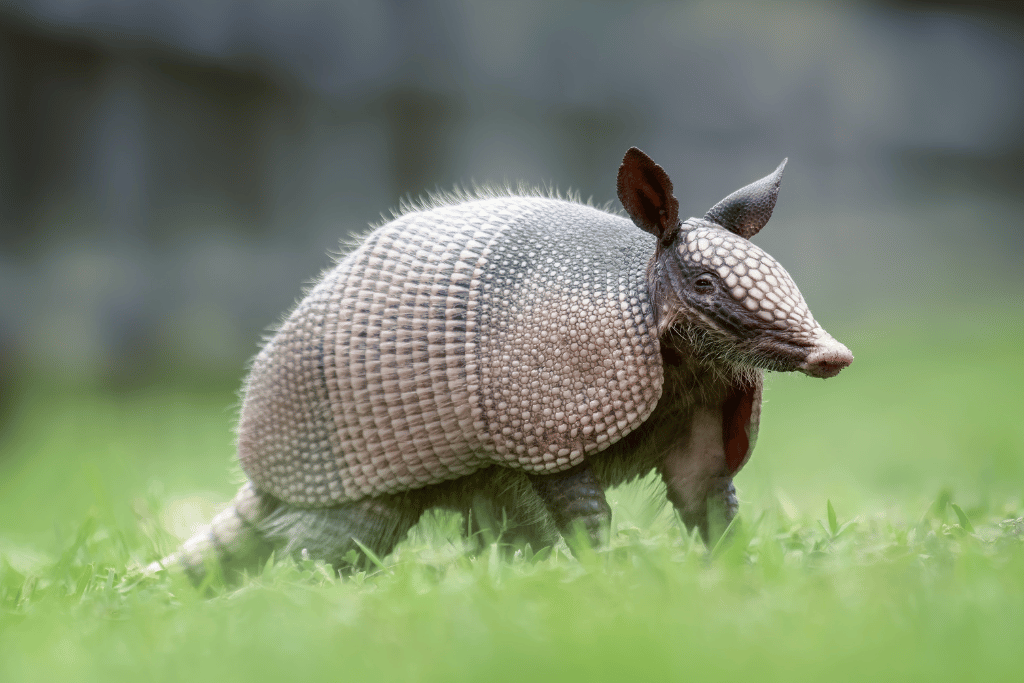
Palm trees are a symbol of paradise, representing hot summer vacations, sandy beaches, and relaxation. With their exotic looks and unique features, they are popular picks for landscaping and gardening enthusiasts worldwide. Of the many species, the King Palm tree vs Royal Palm tends to pose quite a challenge even among advanced green thumbs when it comes to differentiation. While both of them offer stunning visual appeal and are ideal for tropical settings, they differ in various aspects. So, let’s clear out the confusion once and for all, so you can decide which specimen matches your taste and expectations the best!
Is The Royal Palm The Same As Queen Palm?
No! And this is usually the root cause of perplexity. It may seem quite logical to use these names interchangeably, as you wouldn’t think that there are separate kinds of trees that all have a monarchical association. But actually, these two plants are just as different as King Palm vs Queen Palm which are also individual members of the family Arecaceae. So, before you get totally mixed up between these majestic greens, let me quickly de-fog your doubts.
What’s The King Palm Tree?

The King Palm, scientifically known as Archontophoenix alexandrae, is native to the rainforests of Queensland and New South Wales in Australia. This mighty ruler is a tall and slender species that can emerge up to 40-60 feet (12-18 meters) above ground with a trunk diameter of up to 1 ft (about 30 centimeters). Its body is smooth and gray in color, with prominent leaf scars. The fronds of the King Palm are pinnate, meaning they are divided into feather-like leaflets that are arranged in a graceful, arching pattern. These are dark green and glossy, with a length of up to 6 feet (approximately 2 meters).
One of the most striking features of this slender giant is its flowers. The tree produces large clusters of pink flowers that are held aloft on long stalks. The inflorescence is followed by full branches of bright red or orange fruit that are about the size of a golf ball. Although the fruit is edible, only natural wildlife considers them a delicious treat.
It’s also worth mentioning that the Alexander palm is versatile, and therefore well-suited to a range of growing conditions. It is commonly used as an ornamental tree in tropical and subtropical regions around the globe, thanks to its eye-catching appearance and ease of cultivation. In addition to its aesthetic qualities, the King Palm is also valued for its wood, which is utilized for furniture, construction, and other purposes.
What’s The Royal Palm?

The term ’Royal Palm’ is most often used as the short alternative for Cuban Royal Palm (Roystonea regia), which is another respected member of the family Palmae. It is native to Cuba and is also commonly found in other parts of the Caribbean and South Florida.
Spotting the crown of the Cuban Royal Palm also entails some neck exercise, as this exotic gem can reach up to 50-70 ft (approximately 15-21 meters) with a trunk diameter of about 2 feet (60 centimeters). Its fronds are large and wispy, growing up to 18 feet (about 5 meters) long. They are pinnately compound with numerous, deep green, curved, and pointed leaflets arranged on either side of a central axis.
This Cuban aborigine is considered a fast-growing ornamental plant that fits a variety of landscapes. This species of palm is also appreciated for its easy care and low susceptibility to pests and plant diseases.
What creates understandable confusion around Queen Palms and Cuban Royal Palms is the extreme similarity between their flowers. Just like the female monarch, the Cuban specimen boasts small creamy or yellow inflorescence that is arranged in large clusters that grow up to 10 feet (approximately 3 meters) in length. Once the blooming period is over, red, berry-like fruits develop on the tree.
While the body of this plant is long and straight, it is not commonly used for commercial timber production. This is because the trunk is relatively thin and the wood is not particularly durable or strong.
King Palm Tree vs Royal Palm: Do They Require Similar Care?
Despite belonging to the same family, both titans have somewhat different care needs you should know about to be able to sustain the longevity of your new tropical addition. Let’s explore the most significant advice!
King Palm Tree Maintenance
Maintaining an Alexander Palm certainly won’t give you much of a headache. It thrives in well-draining soil that is rich in organic matter like aged compost, peat moss, and well-rotted manure. The pH level of the soil should ideally be between 6.0 and 7.5. This delicate giant enjoys full sun exposure, with at least 6 hours of direct sunlight for optimal development. As for watering, make sure the plant receives enough to drink according to a stable schedule, about 3 times per week. However, the frequency might be subject to change based on the season and humidity. Temperatures of 60°F to 85°F (15-30 Celcius) are sufficient for the growth of the tree. Also, it could benefit from moderate fertilization done with a balanced product every 3 to 4 months.
Cuban Royal Palm Maintenance
Roystonea regia expects its soil to be well-drained and fertile, within a pH range of 6.0 and 7.0. Hailing from a hot country, this plant feels in its element in temperatures of 75°F to 95°F (23-35 Celsius). It’s rather sensitive to persistent cold and frost and enjoys plenty of direct sunlight with high humidity instead. Adequate watering is essential to keep the vitality of your Royal Palm high. Don’t let the soil dry out completely between waterings, so one session each week is usually recommended to help the greenery maintain its best conditions. Regular fertilization is not to be neglected if you wish to promote healthy growth and development. Use a high-quality product targeted specifically at palms and try to pick one high in micronutrients.
Final Words
Even though the King Palm and Royal Palm may share the same regal namesake, they have distinct differences that make each one a unique choice for tropical landscaping. With the right care and attention, both greens can thrive and provide a lush and stunning addition to your everyday environment. Ultimately, the decision comes down to personal taste and specific needs.
Frequently Asked Questions (FAQ)
Why is the Cuban Royal Palm the national tree of Cuba?
This mighty plant is considered the national tree of Cuba due to its cultural and historical significance, ecological importance, and symbolism of pride and resilience for the Cuban people. Furthermore, it is an iconic symbol of the Caribbean and provides a habitat for many animal species while preventing erosion and providing shade. It was often planted in public spaces during the colonial period and used in religious ceremonies by the indigenous people of Cuba. The Cuban government officially designated it as the national tree in 1943.
How fast does the Royal Palm grow?
This Cuban native grows relatively quickly, generally 1-2 ft (0.3-0.6 meters) a year, reaching its final height in about 10-20 years. However, the growth rate might vary depending on the soil quality, climate conditions, and other environmental factors.
Is the Cuban Royal Palm immune to pests and diseases?
It’s true that the plant is not prone to be attacked by pests or diseases, but if not treated properly, it might develop some health issues. Palm leaf skeletonizer, the royal palm bug, and Fusarium Wilt are the most common problems you should look out for. Regular monitoring and constant care are crucial elements of keeping your greenery lush and healthy.



